Affiliate disclosure: This post may contain affiliate links. Please see our Privacy Policy.
Cold stratification is a plant defense mechanism, designed to keep seeds from breaking dormancy and sprouting at the wrong time. In nature, seeds would cold stratify all on their own under a blanket of snow.
Starting seeds for your garden in the spring is a different matter, as those seeds have likely been in a warm, room temperature packet all winter long. No worries, it’s easy enough to stratify seeds at home before planting.
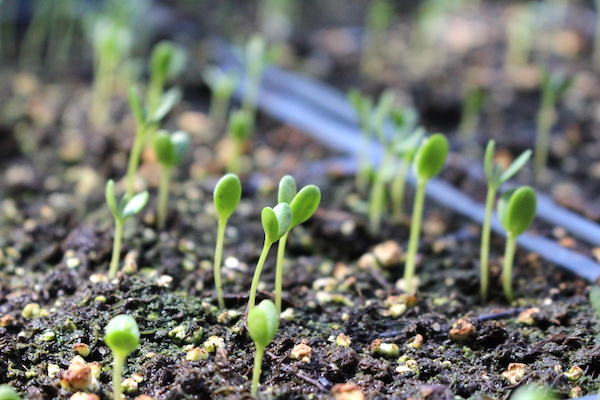
I spend a lot of the winter months here in Vermont flipping through garden catalogs and dreaming of my spring garden. They’re full of beautiful pictures and text designed to convince you to grow just about everything under the sun. The problem is when those little seed packets arrive there’s often an extra step before planting: Cold Stratification.
I’ve been caught off guard by the need to cold stratify seeds more than once, and now I look over the planting instructions on every single packet as soon as they arrive. The catalogs always gloss over the technical details of growing particular crops, but the seed packets are a wealth of information. Take a look at the packets, and they’ll say something like “Stratify seeds for 6 weeks before planting” or “seeds require 5 days cold, moist stratification to break dormancy.”
The amount of time will depend on the crop, but for the most part, the process of stratifying seeds is the same.
How to Stratify seeds
The most dependable way to stratify seeds is in a moist medium, wrapped in plastic in the refrigerator. Larger seeds tend to do well in a bit of moistened peat or sand, placed into a plastic bag.
Smaller seeds can be distributed onto moist paper towels. The trick is to keep them moist, but not sopping wet.
The bag itself is designed to retain moisture, but like all living things, the seeds need to breathe. Ensure adequate ventilation during cold stratification by cracking the top of the bag open, or punching a few small holes into the bag. I generally use Ziploc storage bags, and I just don’t seal the top.
Some instructions will tell you to moisten the medium with a bit of water and hydrogen peroxide, and the added peroxide will sterilize the medium a bit and prevent mold. I haven’t found this necessary, and if you find yourself battling mold consider adding less water to the towels, increasing ventilation or moving them to a colder spot in the fridge (I keep them at the way back).
How Long to Cold Stratify Seeds
The length of time to cold stratify seeds really depends on the variety. I’ve seen packets labeled “cold stratify for 5 days” and I wonder, what’s the point? But that plant evolved that response for a reason and the times I’ve ignored it they don’t sprout. Most plants that require stratification need a bit longer than that, usually at least 4 to 6 weeks.
As a general rule, the hardier the plant, the longer they need to cold stratify. Sea Buckthorn, a very hardy Siberian superfruit that we grow here on our homestead requires 90 days of cold moist stratification. It’s hardy down to zone 2, and it’s hard to find a corner of the earth too cold for this resilient plant.
They’re a bit tricky beyond the cold stratification, as this plant also requires scarification to germinate. That’s another plant defense mechanism, designed to keep seeds that fall from the mother plant from germinating and overcrowding.
The seeds will only sprout if they’re beaten up a bit, as though they’ve gone through a bird’s acidic digestive system as they were carried far away from the parent plant. You can accomplish this by rubbing them between 2 sheets of coarse sandpaper to rough them up a bit BEFORE cold stratification.
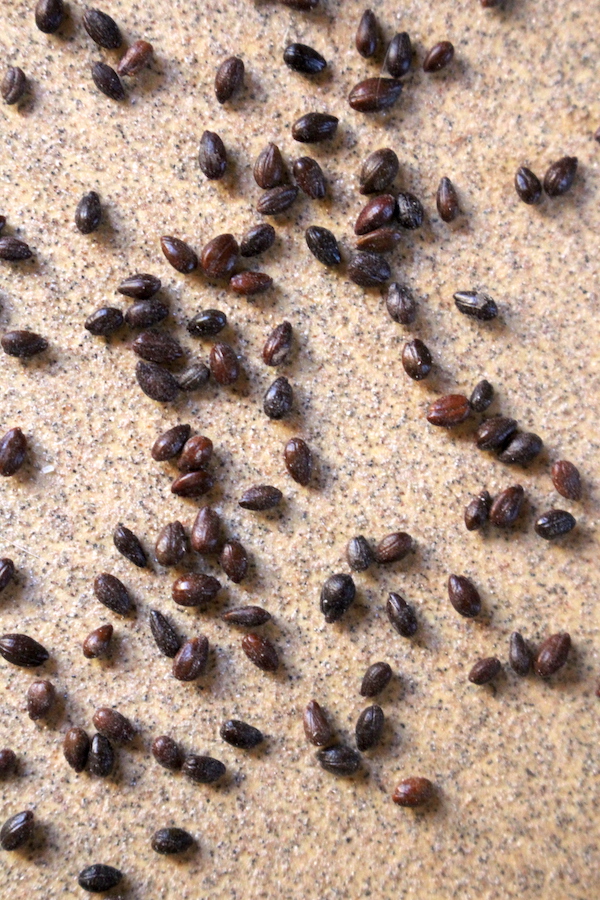
Growing apples from seed, on the other hand, is a bit simpler. They generally grow from zones 4 to 7/8 and most varieties require about 6 weeks of cold stratification. Actually just storing the apples in the refrigerator often does the trick, and if you’re buying apples late in the winter they’ve likely already spent weeks in cold storage before they hit the grocery store shelves.
On occasion, I’ve even cut into apples that had seeds already sprouting inside as a result of long cold moist stratification more or less by accident in cold storage. For the most part though, if you place apple seeds on moist paper towels in the fridge they’ll start to germinate right around the 6-week mark.
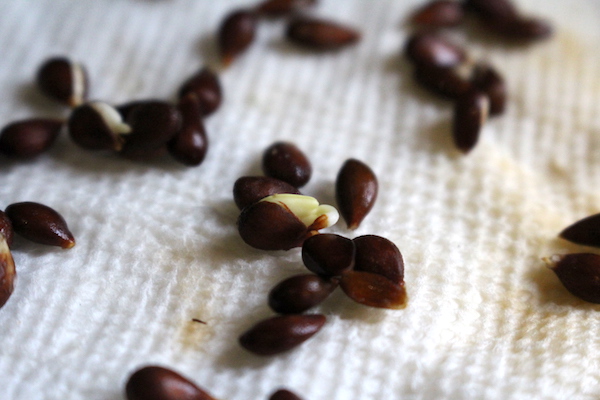
Lazy Seed Stratification
While most plants respond well to cold, moist stratification using sand, peat or paper towels…others are less picky. Cold dry stratification works well with some varieties, and that basically means just sticking the whole seed packet in the back of the refrigerator.
I’ve had pretty good success with this method in the past few years, as two toddlers running around means I have A LOT less time to futz around with the pickiest of plants. When those surprise packets arrive with the words “cold stratify” on the outside, I just stick them right in the fridge and it’s worked out pretty well thus far.
We have a huge bumper crop of marshmallow plants as a result of that lazy method, no paper towels required.
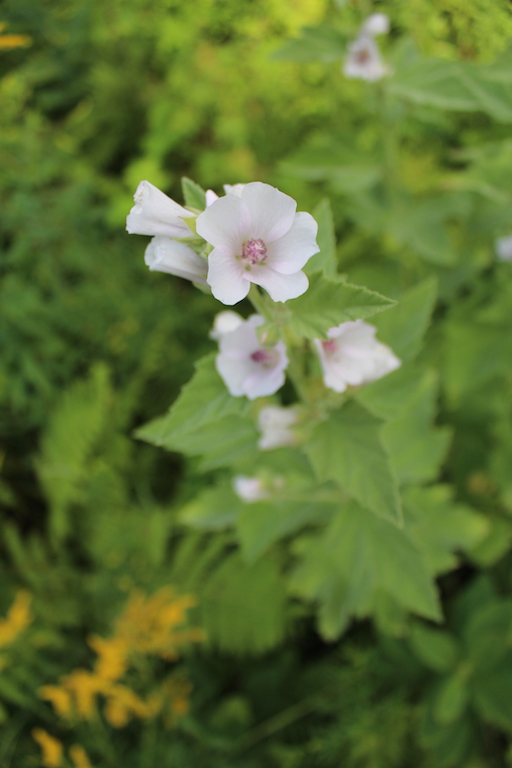
Cold Stratification In the Garden
Another very simple method for cold stratification is to simply plant the seeds outdoors late in the fall. This mimics nature’s natural rhythms, and it’s like the plants just dropped their seed heads at the end of the season. The seeds will overwinter under a blanket of snow, staying just the right temperature for germination.
A couple of things to keep in mind with this method though…
- The seeds are outdoors, and could just as easily be eaten by moles, chipmunks or birds. That’s one reason to plant them as late in the fall as possible, to minimize the time they’re out there before snow cover protects them (somewhat).
- This only works if you’re in the right growing zone. Chokecherries, for example, will grow as bushes as warm as zone 8. The seeds, however, won’t cold stratify in that climate. They’ll only grow from seed outdoors in cooler climates, below zone 6. If you’re in a warm climate, keep in mind you may need to artificially stratify seeds.
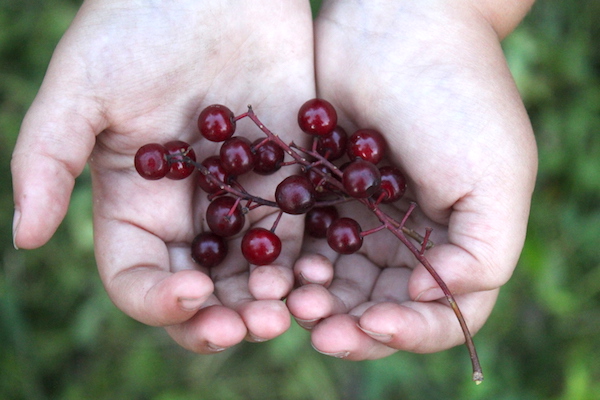
Seeds that Don’t Require Cold Stratification
When I learned about cold stratification, I assumed that most plants, especially perennials, grown in our cold northern climate would require cold stratification. Not the case. When I was researching how to grow rhubarb from seed I was pleasantly surprised that it doesn’t require cold stratification.
That was great news, as it was spring already and those seeds had been stored all winter in my pantry…
I also learned that it’s actually grown as an annual in hot climates (zone 9/10) by direct seeding fresh seeds in the fall, and growing the cold-loving plants in a hot climate winter. More good news, since my family loves rhubarb and lives in the Mojave desert!
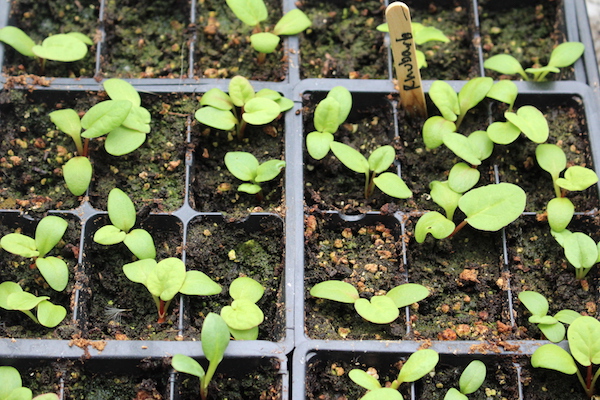
Similarly, you can grow strawberries from seed without any cold stratification. It just goes to show you that there’s really no telling what’s going to require cold stratification. As a rule, many but not all, native plants from cold climates will require cold stratification. Good examples include common milkweed, St. Johns Wort, coneflowers, and rudbeckia.
See, that seed packet surprise didn’t turn out so bad after all! You learned a few new things about your plants and got to participate in a time-honored winter ritual that the plants have been enduring year after year as a part of their natural cycle of life. Isn’t it neat that this time it happened right in your own fridge?
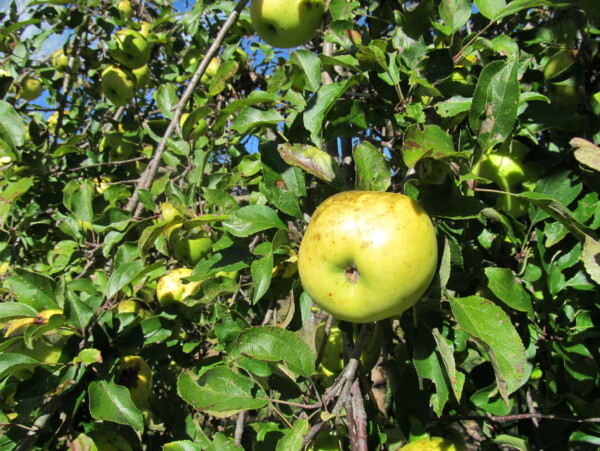



BTW: Honeybees do not thrive in our high-heat-low-humidity climate. So wasps do almost all the pollinating. To ensure pollination, we encourage wasps to build small wasp nest near the porcelain berry vines. Not especially convenient, but we have developed a system for controlling the wasp population.
Thank you for the good advice. I live at 5000 feet elevation in Colorado. Very dry, hard soil. We really like a beautiful vine — amur pepper vine Ampelopsis brevepedunculata elegans — that is illegal to grow in many states because it is super invasive. In Colorado, the vine is very hard to grow, and cannot survive without a drip irrigation system. We have learned that the seed stratification is somewhat iffy. We’ve learned to put the smallish seeds on a moist — but not wet — napkin in a plastic bag in the fridge on March 1, then check the seed bed every week. Sometimes the seeds sprout in less than 21 days, other times it’s 45 days. We plant the sprouts in small peat moss cups under led grow lights, then on Mothers Day when killing frost is no longer a threat we plant the sprouts in high quality media along the fence line, turn on the drip system that dispenses two ounces of water to every vine every 24 hours. A lot of work but the vines are gorgeous when the porcelain colored berries appear in early August.
You’re very welcome. Thanks for sharing.
I have all kinds of flower and veg seeds coming by mail for Spring. I was horrified by the confusing ” stratification Process” for many of them. Until Now. This site gave a lot of clarity to this confusing process. I now plan to put some in the fridge and some in an outdoor shed.
So glad the post was helpful for you.
I have a packet of Wild Leek seeds (Allium tricoccum), and the back of the seed packet is somewhat cryptic: “In order to germinate, seeds need a warm, moist period followed by a cold, moist period. Specifics unsure; your input would be of interest.” Not sure what to do with that, since no time frames are given. How would you approach these seeds? I appreciate your thoughts. Thanks!
That’s mostly trying to tell you to sow the seeds in the late summer or autumn, as the seeds would be dropped in nature. Plant in August or September, under a good layer of leaf litter.
Good luck!
Thank you very much for this article. I was so confused about the stratification process and you answered a lot of my questions.
You’re very welcome. We’re glad it was helpful.
Thank you so much for all of the information!
Hi Ashley! Was so excited to review all your seed catalogs and only ordered a half dozen. And I still live in an apartment, but here’s to future dreams!
In the past I have also had a lot of success saving extra vegetable seeds for a number of years by carefully keeping them in the back of my fridge. I had a larger glass jar and put dry milk powder in the bottom covered by (breathable) paper towels and then my half used seed packets on top. Lid on. I was able to still germinate heirloom pepper and tomato seeds for 4 or5 years later. I did use germinating hot pads underneath my seed cups to get them going. This method worked very well with heirloom veggie seeds from Seed Savers of Iowa. And seeds are quite expensive. This way I could have a much larger selection to work with each year, I didn’t have to re-order.
I love your posts Ashley! You are a generous treasure of information!
You are quite welcome!
Oh, I completely agree with the above subscriber. You are a treasure and have blessed all who find your site with techniques that previous generations were raised learning, as was I, but lost most of those memories due to a brain injury. Now, I am relearning what my mother taught me, from you, a precious and passionate young woman.
God Bless you and keep you and your family safe and healthy and filled with joy,
JoJo
Hi! What about potting up into trays and keeping them moist (and frozen) outside and letting them thaw as nature intended in spring? Is that bad?
That’s definitely an option. As is just direct seeding in the fall outdoors, and allowing the seeds to stratify naturally. A couple of issues though:
-Insects/rodents/birds/etc can dig up the seeds and eat them. This happens to many (if not most) seeds in the wild, so it’s not dependable if you want to ensure a crop.
-Some areas aren’t cold enough. Chokecherries, for example, will grow in warmer climates just fine, but their seed won’t germinate there because they don’t have enough winter chill hours.
-Fluctuating heat/cold and dry/wet times in the winter can cause the seeds to die from drying out, or sprout early. That happens in nature, then they die.
So yes, you can definitely do it the natural way, but it’s hit or miss some years depending on the weather, as it would be if the plant dispersed its own seeds naturally. New crops don’t come every year. If you do it this way, plant extra seed (around 4-5 times as much)…following the old adage, “One For The Blackbird, One For The Crow, One For The Cutworm And One To Grow.”
Hi,
I have a mixture of poppy and larkspur seeds that have been stratifying in my refrigerator for about 5 weeks. I just noticed to my horror (probably an overreaction, to say the least), that they are starting to sprout and it is only nearing February! The instructions said to stratify them for 12 weeks. Should I just go ahead and plant them outside? I live in the high desert And our winter temperatures during the day right now tend to be in the 40s. To me it makes sense to just go ahead and get the seeds outside into the dirt.
Thanks in advance, Ashley!
If they’re sprouted, they need to get into the dirt one way or another, or those little sprouts in there will mold. Regardless of the outside temps, they’re going to do better out there than being left once they sprout. Highs in the mid 40’s is our “spring” here in April/May, and that’s when I’d plant them out here. Sounds like they’re likely right on schedule if you’re in the high desert.
Thank you, Ashley! Yes apparently frig temp is good enough for them and it’s at above that most every day here. Into the dirt they go… Thanks again
Julie
I just put Lavender in the fridge to cold stratify. Can you tell me what to do when the time is up and they are ready to take out? Is it this time that I start indoors under a heatlamp?
Thank You
JoAnn
Once the cold stratification process is complete, you can plant your seeds like you normally would.
For quick growing greens, you can use seeds for microgreen. It is impossible to get a seed crop from seeds for microgreen, but they have their advantages:
1. No need to wait long. It can be eaten on the second day as seedlings. Or cut off as microgreen after five to ten days.
2. The composition of vitamins and minerals is ten times greater than adult plants.
3. Only a LED red lamp and water (hydroponics) are needed for germination. You can also sprout without soil – on paper or on hemp growing medium.
4. Can be grown indoors without sunlight.
5. Low cost of seeds per kg. compared to ordinary seeds.
6. You can buy from us about 45 names of seeds for microgreen.
Not GMOs. Organics
Storage like ordinary seeds, depending on the type of seeds 2-6 years. Seeds are certified by the European Union. Security. Quality assurance. High germination.
I don’t think apple seeds will give you the apples you desire, that’s why grafting is so popular. Thanks
Thank you so much for the info. Went to that site and got some seeds, strawberries and others, This will be my first time from seed, can’t wait. I’ve learned so much from your site. Thanks again.
Thank you for such a CLEAR & concise explanation for something that I was confused about (& that all other research made sound much more complicated).
I think that I will now attempt seeds that require the cold stratification & even scarification.
I was reading seed catalogs & had thought I might be better off buying plants already started (which is way more expensive) instead because it looked quite complicated.
This will allow us to plant many more things a whole lot sooner!
In the Midwest (SE Iowa), we typically have enough winter, but I have a bad habit of garden planning after it starts!
Thank You!
Wonderful, so glad I could help!